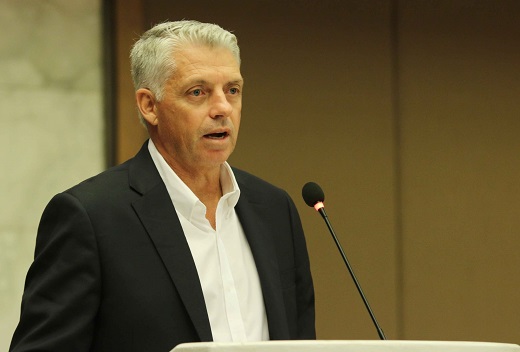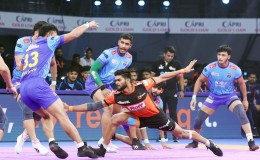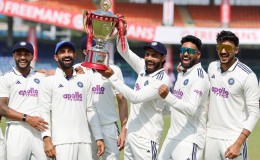 Dubai: The International Cricket Council (ICC) on Thursday announced a new financial model that will reduce the Board of Control for Cricket in India's (BCCI) share of ICC revenue to a large extent and will allocate more resources to several other Full Member nations of the game's world governing body.
Dubai: The International Cricket Council (ICC) on Thursday announced a new financial model that will reduce the Board of Control for Cricket in India's (BCCI) share of ICC revenue to a large extent and will allocate more resources to several other Full Member nations of the game's world governing body.
The decision was arrived at after five days of intense negotiations which included meetings of the ICC board, chief executives' committee, development committee, audit committee, financial and commercial affairs committee and women's committee and forum.
The new financial model will do away with the resolutions passed in 2014 which allocated disproportionately high resources to the BCCI, Cricket Australia (CA) and the England and Wales Cricket Board (ECB).
"Progress has been made on a number of significant issues, in particular around international cricket structures," ICC Chief Executive David Richardson said in a statement on Thursday.
"The ICC board appointed a working group which proposed the model has continued to be guided by the following principles -- equity, good conscience, common sense and simplicity, enabling every member to grow, revenue generated by members, greater transparency and recognition of interdependency amongst members, that cricket playing nations need each other and the more strong nations there are, the better for the sport," the statement added.
According to the new model, based on current forecasted revenues and costs, the BCCI will receive $293 million across the next eight-year cycle, the ECB will get $143 million, Zimbabwe Cricket $94 million and the remaining seven Full Members $132 million each.
The BCCI is the biggest loser under the new system. Earlier, the Indian board used to get around $440 million under the previous model which favoured the three biggest powers of world cricket -- India, Australia and England.
The ECB's share has reduced marginally from the previous amount of around $150 million.
Cricket Australia on the other hand, will receive a share which is only slightly less than what it used to receive previously. Its share is now in line with those going to South Africa, Pakistan, New Zealand, Sri Lanka, Bangladesh and the West Indies.
The Associate Members will receive funding of $280 million. This model was passed by a margin of 13 votes to one.
Apart from this, an agreement on a new Constitution to be put before the ICC Full Council was also reached.
The revised Constitution was approved by 12 votes to two. This takes into account the ICC board's feedback following extensive discussion at the February meeting and further inputs from the working group.
It will now be presented to the ICC Full Council in June for adoption.
"The Constitution reflects good governance, expands on and clarifies the roles and objectives of the ICC to provide leadership in international cricket," the ICC statement said.
"Further constitutional changes proposed include -- the potential to include additional Full Members in the future subject to meeting membership criteria, removal of the affiliate level of membership so only two categories; full member and associate member, the introduction of an independent female director, the introduction of membership criteria and a membership committee established to consider membership applications."
It added, "The introduction of a Deputy Chairman of the board who will be a sitting director elected by the board to stand in for the Chairman in the event that he or she is unable to fulfil their duties, equal weight of votes for all board members regardless of membership status, all members to be entitled to attend the Annual Generam Meeting (AGM)."
"Under the revised version that will be presented to the annual conference and in an effort to support existing Full Members, the potential for reclassification of Full Membership was removed. The board acknowledged the need to sustain and grow the number of members competing at the top level."
ICC Chairman Shashank Manohar welcomed the developments, asserting that the game will grow stronger as a result.
"This is another step forward for world cricket and I look forward to concluding the work at the Annual Conference," Manohar said.
"I am confident we can provide a strong foundation for the sport to grow and improve globally in the future through the adoption of the revised financial model and governance structure."
The ICC also arrived at a slew of other decisions.
The game's global governing body plans to bring more context to international bilateral cricket with the matter discussed at the Chief Executives' Committee and in an additional workshop.
The ICC board wants to resolve the current calendar congestion in order to bring a clear framework to all three formats of the game.
There was some good news for Pakistan as well with the ICC looking at ways to resume international cricket in the country.
Zimbabwe, who visited Pakistan for a limited-overs series last year, became the first international team to tour the violence-ridden country since 2009, when the Sri Lankan team bus was attacked by terrorists near the Gadaffi Stadium in Lahore.
That incident prompted almost all cricket playing nations to keep away from visiting Pakistan, whose national team were forced to adopt the United Arab Emirates (UAE) as their home base.
However, the successful participation of several international stars -- specially from the West Indies -- in this year's Pakistan Super League (PSL) has encouraged the ICC to look at ways to increase international cricket in the country.
"The ICC board has considered an update following the ICC delegation to the PSL final in Lahore as part of its commitment to support the return of international bilateral cricket to Pakistan as long as it is safe for players, officials, media and fans," the ICC statement said.
"The feasibility of further matches in Pakistan involving a World XI is now being considered from a security and budget perspective."
The ICC also announced that the eight top ranked ODI teams competing in the second edition of the Women's Championship commencing later this year, will be required to play a fixed set of three ODI fixtures against each of the other teams. The Women's Committee has also recommended that any additional matches played (up to five) should be T20Is in recognition of the role the format can play in the growth of the game.
"It was agreed that a separate rankings system for Women's ODI and T20I cricket be developed with the latter being fully inclusive of all international teams playing that format.
"It was agreed that DRS can be used in women's televised bilateral ODIs if host Member boards choose to do so," the statement said.











